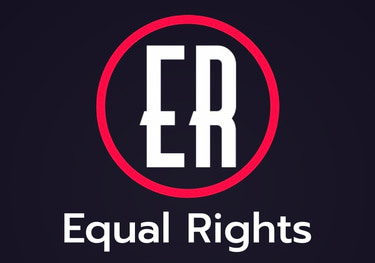Health Inequities in a Changing Climate
Climate change poses a significant threat to global health, with its impacts disproportionately affecting vulnerable populations.
Kylo B
6/14/2024
Health Inequities in a Changing Climate
Climate change poses a significant threat to global health, with its impacts disproportionately affecting vulnerable populations.
These health inequities are exacerbated by existing social, economic, and environmental disparities.
This article examines the health impacts of climate change on different populations, emphasizing the urgent need for equitable healthcare responses to mitigate these effects.
Understanding Health Inequities in Climate Change
Definition and Key Concepts
Health inequities refer to avoidable differences in health outcomes between different population groups, often arising from social, economic, and environmental factors. Climate change amplifies these inequities by disproportionately affecting those who are already marginalized and disadvantaged.
Climate Change and Health
Climate change influences health through various direct and indirect pathways:
Direct Effects: Increased frequency and intensity of extreme weather events, such as heatwaves, floods, and storms, leading to immediate health risks.
Indirect Effects: Altered patterns of diseases, reduced agricultural productivity, and compromised water quality and availability, impacting long-term health outcomes.
Health Impacts on Vulnerable Populations
Heat-Related Illnesses
Overview
Extreme heat events are becoming more frequent and severe due to climate change. Vulnerable populations, including the elderly, children, and those with preexisting health conditions, are at higher risk of heat-related illnesses such as heatstroke and dehydration.
Case Study: Heatwaves in Europe
The 2003 European heatwave resulted in over 70,000 excess deaths, predominantly affecting older adults and individuals with chronic health conditions. This event highlighted the need for targeted public health interventions to protect vulnerable groups during extreme heat events.
Vector-Borne Diseases
Overview
Climate change alters the distribution and transmission of vector-borne diseases, such as malaria, dengue fever, and Lyme disease. Warmer temperatures and changing precipitation patterns create favorable conditions for disease-carrying vectors like mosquitoes and ticks.
Case Study: Malaria in Sub-Saharan Africa
Sub-Saharan Africa has experienced shifts in malaria transmission due to changing climate conditions. Increased temperatures and altered rainfall patterns have expanded the habitat range of mosquitoes, exacerbating the burden of malaria in already vulnerable regions.
Respiratory and Cardiovascular Diseases
Overview
Climate change exacerbates air pollution, contributing to respiratory and cardiovascular diseases. Populations in urban areas, particularly those with limited access to healthcare, are disproportionately affected by poor air quality.
Case Study: Air Pollution in India
In India, high levels of air pollution, exacerbated by climate change, have led to a surge in respiratory illnesses, particularly among children and the elderly. Poor communities living in urban slums are most affected due to their exposure to pollutants and limited healthcare access.
Food and Water Security
Overview
Climate change impacts agricultural productivity and water availability, leading to food and water insecurity. Malnutrition and waterborne diseases are prevalent among populations with limited resources and inadequate infrastructure.
Case Study: Drought in East Africa
Prolonged droughts in East Africa have resulted in severe food and water shortages, affecting millions of people. Malnutrition rates have soared, particularly among children, and waterborne diseases have increased due to the scarcity of clean water.
The Need for Equitable Healthcare Responses
Integrating Climate and Health Policies
Overview
Effective healthcare responses to climate change must integrate climate considerations into health policies and planning. This includes assessing climate-related health risks and developing strategies to address them.
Best Practices
Climate-Resilient Health Systems: Strengthening health systems to withstand climate impacts through infrastructure improvements, workforce training, and emergency preparedness.
Health Impact Assessments: Conducting assessments to evaluate the potential health impacts of climate policies and projects, ensuring they do not exacerbate existing inequities.
Community-Based Approaches
Overview
Engaging communities in climate and health initiatives ensures that interventions are culturally appropriate and address local needs. Community-based approaches empower vulnerable populations to participate in decision-making processes.
Best Practices
Community Health Workers: Training and deploying community health workers to provide education, preventive care, and early warning systems for climate-related health risks.
Participatory Planning: Involving community members in the development and implementation of health interventions, fostering ownership and sustainability.
Access to Healthcare
Overview
Ensuring equitable access to healthcare is crucial for addressing health inequities exacerbated by climate change. This includes improving healthcare infrastructure, increasing healthcare workforce capacity, and providing financial support for vulnerable populations.
Best Practices
Mobile Clinics: Deploying mobile clinics to reach remote and underserved areas, providing essential healthcare services and climate-related health education.
Telemedicine: Leveraging telemedicine to expand access to healthcare for populations in hard-to-reach areas, particularly during extreme weather events.
Advocacy and Policy Change
Overview
Advocacy and policy change are essential for addressing the root causes of health inequities and ensuring that climate policies prioritize vulnerable populations.
Best Practices
Policy Advocacy: Engaging in advocacy efforts to influence climate and health policies at local, national, and international levels, ensuring they address the needs of vulnerable populations.
Cross-Sector Collaboration: Promoting collaboration between health, environment, and social sectors to develop comprehensive and integrated approaches to climate and health challenges.
Climate change poses significant health risks, disproportionately affecting vulnerable populations and exacerbating existing health inequities. Addressing these challenges requires a multifaceted approach, integrating climate considerations into health policies, engaging communities, ensuring equitable access to healthcare, and advocating for policy change. By adopting these strategies, we can mitigate the health impacts of climate change and promote a more equitable and resilient future for all.
